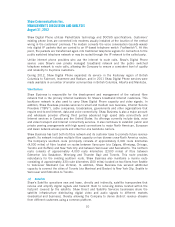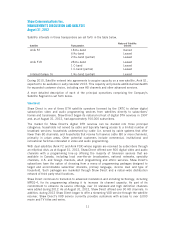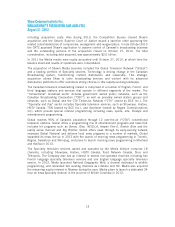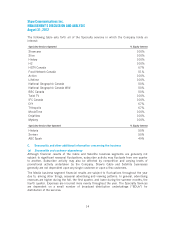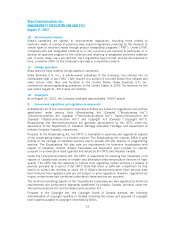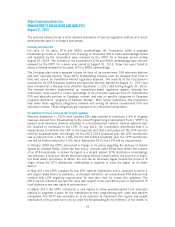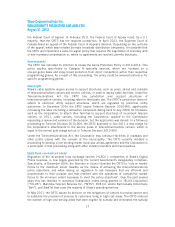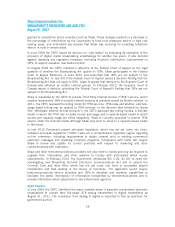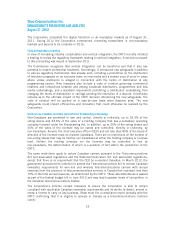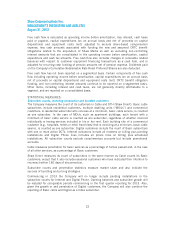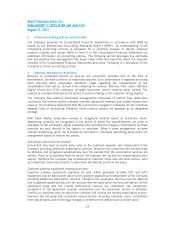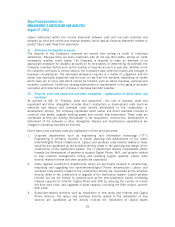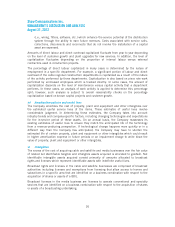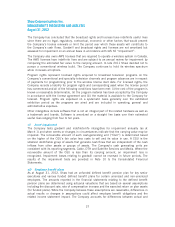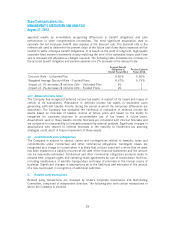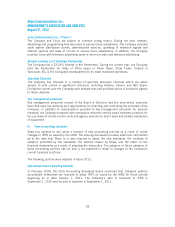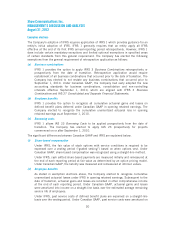Shaw 2012 Annual Report Download - page 24
Download and view the complete annual report
Please find page 24 of the 2012 Shaw annual report below. You can navigate through the pages in the report by either clicking on the pages listed below, or by using the keyword search tool below to find specific information within the annual report.Shaw Communications Inc.
MANAGEMENT’S DISCUSSION AND ANALYSIS
August 31, 2012
E. Key performance drivers
Shaw measures the success of its strategies using a number of key performance drivers which
are outlined below, including a discussion as to their relevance, definitions, calculation
methods and underlying assumptions.
FINANCIAL MEASURES:
i) Revenue
Revenue is a measurement determined in accordance with International Financial Reporting
Standards (“IFRS”). It represents the inflow of cash, receivables or other consideration arising
from the sale of products and services. Revenue is net of items such as trade or volume
discounts, agency commissions and certain excise and sales taxes. It is the base on which free
cash flow, a key performance driver, is determined; therefore, it measures the potential to
deliver free cash flow as well as indicating growth in a competitive market place.
The Company’s continuous disclosure documents may provide discussion and analysis of non-
IFRS financial measures. These financial measures do not have standard definitions prescribed
by IFRS and therefore may not be comparable to similar measures disclosed by other
companies. The Company’s continuous disclosure requirements may also provide discussion
and analysis of additional GAAP measures. Additional GAAP measures include line items,
headings and sub-totals included in financial statements. The Company utilizes these measures
in making operating decisions and assessing its performance. Certain investors, analysts and
others utilize these measures in assessing the Company’s operational and financial performance
and as an indicator of its ability to service debt and return cash to shareholders. These
non-IFRS measures and additional GAAP measures have not been presented as an alternative to
net income or any other measure of performance or liquidity prescribed by IFRS. The following
contains a listing of the Company’s use of non-IFRS financial measures and additional GAAP
measures and provides a reconciliation to the nearest IFRS measure or provides a reference to
such reconciliation.
ii) Operating income before amortization and operating margin
Operating income before amortization is calculated as revenue less operating, general and
administrative expenses and is presented as a sub-total line item in the Consolidated
Statements of Income. It is intended to indicate the Company’s ability to service and/or incur
debt, and therefore it is calculated before amortization (a non-cash expense) and interest.
Operating income before amortization is also one of the measures used by the investing
community to value the business. Operating margin is calculated by dividing operating income
before amortization by revenue.
Relative increases period over period in operating income before amortization and in operating
margin are indicative of the Company’s success in delivering valued products and services, and
engaging programming content to its customers in a cost-effective manner.
20


